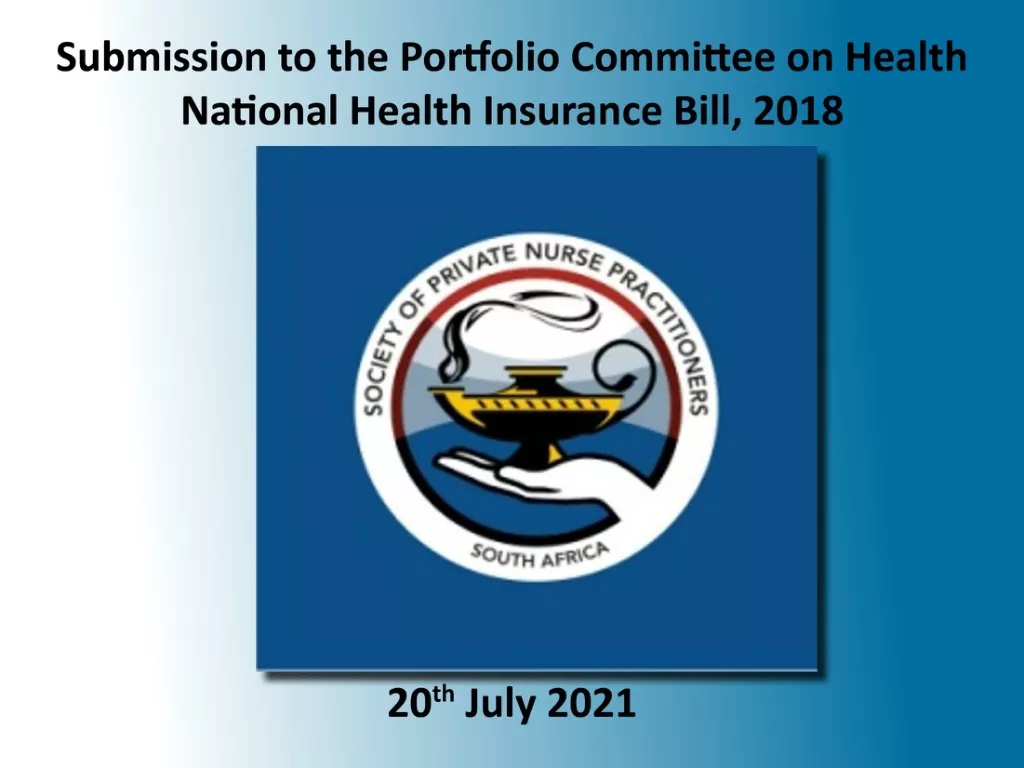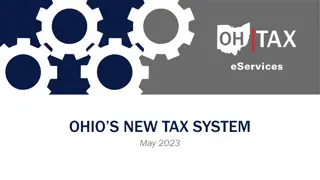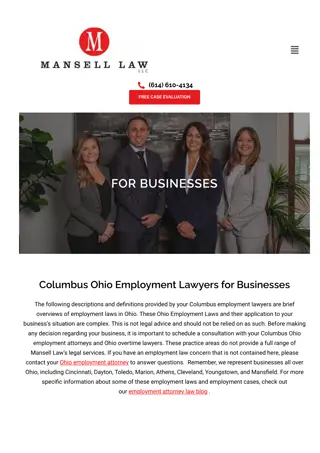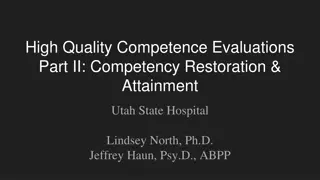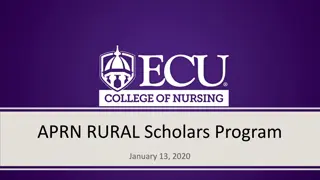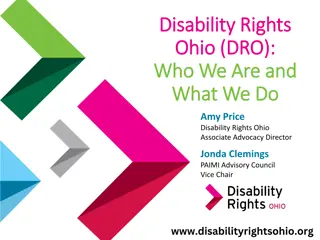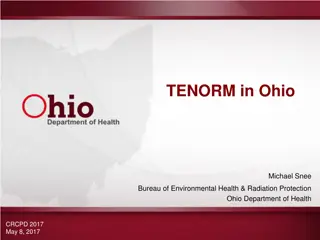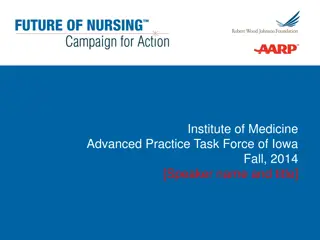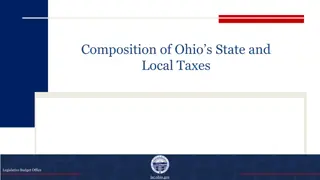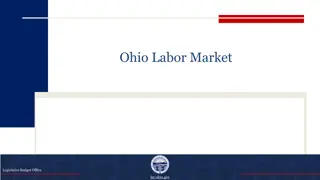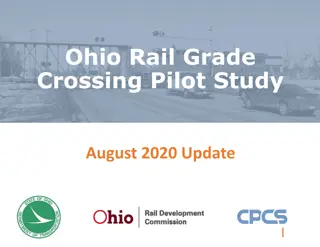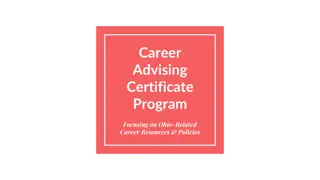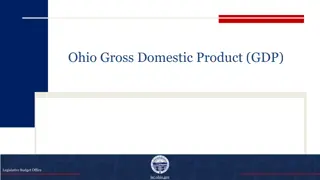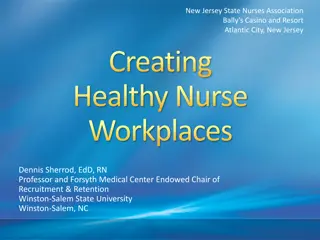Nurse Competency Analysis in NW Ohio Healthcare Education
The NW Ohio healthcare education team conducted a gap analysis on nurse competencies, focusing on ADN to BSN transitions. Findings revealed strengths in Patient Centered Care and areas of improvement in Leadership, Professionalism, and other competencies. The team also shared insights on student demographics and motivations for pursuing ADN vs. BSN programs.
Download Presentation

Please find below an Image/Link to download the presentation.
The content on the website is provided AS IS for your information and personal use only. It may not be sold, licensed, or shared on other websites without obtaining consent from the author. Download presentation by click this link. If you encounter any issues during the download, it is possible that the publisher has removed the file from their server.
E N D
Presentation Transcript
NW Ohio Team Lourdes University Owens Community College University of Toledo ProMedica
Thank you Team Judy Didion, Sue Deckelman, Robin Hamm - Lourdes Dawn Wetmore, Ruth Ankele, Irene Jones Owens Barb Tassell, Chris Koffel, Annette Crews Promedica Diane Salvador, Kathleen Mitchell University of Toledo Carol Drennen OAC Project Director
Ohio Nurse of the Future Model QSEN Plus: Competencies surrounding these 7 concepts: Patient Centered Care Team Work and Collaboration Evidence-Based Practice (EBP) Quality Improvement (QI) and Safety Informatics Leadership and Professionalism System-Based Practice
Gap Analysis Summary ADN-BSN ADN - BSN Gaps in ADN curriculum were identified in six of the seven Ohio Nurse Competencies. There were no gaps identified in Patient Centered Care. Greatest Gaps were noted in System Based Practice and Leadership and professionalism. The next largest gaps were noted in Informatics, Quality Improvement and Evidenced based Practice. Many concepts are introduced in the ADN curriculum and then further developed in the RN to BSN program
Gap Analysis New Grad-Practice Patient Centered Care ranked the highest in areas of need and low in the gap, therefore indicating the NLRNs are doing well and there were no gaps in skills. The competency need for Informatics ranked as the 5th out of the 7 for entry level needs but there was only 1 competency noted in the gap; therefore indicating that the NLRNs are doing well with this competency. Most frequent gaps and opportunities for improvement was the Leadership and Professionalism competency. It ranked at the top of both the entry level needs and in what the NLRN do not have when entering the residency program. Within the KSAs of this competency there were specific concerns with time management, interprofessional communication and accountability.
The NW Ohio Team met April 15, 2015 at Owens Community College and shared and the purpose of the SIP, their initial gap analysis findings, and the Owens student survey with the Owens Community College ADN faculty. The majority of students who choose the ADN option are non-traditional and balance work and family commitments. There are very few traditional (straight from high school) students attending the Main campus of Owens. There are more students attending the Findlay branch. Time and money are the main reasons for choosing ADN to enter nursing practice and time and money are the major barriers for continuing their education toward a BSN immediately upon graduation from Owens.
Continued: Findings from Owens Meeting The major motivator for returning for a BSN is career advancement into non bedside nursing positions. This was a great concern voiced by practice. Currently there is neither pay differential, hiring preferential nor mandate for a BSN in the practice settings in NW Ohio. Major health systems do provide financial support for RNs returning to school for higher education but there is a cap on the amount of support so RNs are choosing less expensive BSN programs in order to save money toward graduate education.
Next Phase Seamless Progression Model Toolkit

 undefined
undefined


